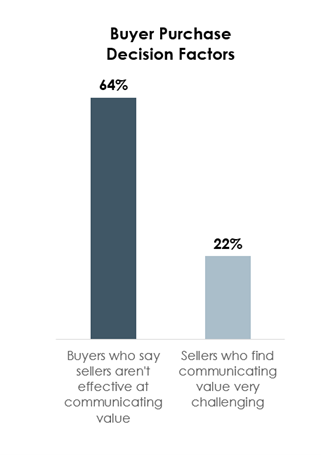ATD Blog
Adapting to Change: Strategies for Bridging Sales Skill Gaps
Thu Jun 06 2024

In today’s fast-paced market, sales teams across various industries are grappling with the challenge of keeping their skills sharp to remain competitive. This task is increasingly critical, given the trends toward protracted decision-making processes and a rise in deals not closing due to indecision.
For sales leaders and their teams, this means it’s time to review and adjust strategies to excel in this complex environment.
Closing existing skills gaps means you must determine the current level of skills and capabilities, identify which areas to develop, and take a strategic approach to development.
Becoming an Expert in Sales Skills
Focusing on key sales competencies is a vital first step for addressing skill gaps. Review your organization’s sales competency model to identify the skills sellers need. Once you’ve identified the skills, knowledge, and attributes sellers need to learn, you can deploy the content, training, and tools to help build these competencies.
For a consultative selling sales team, evaluate core competencies across the sales process, as well as opportunity and account management, for potential development:
1. Value Communication: There is often a gap between what sellers believe and buyers’ perceptions. Research shows that while few sellers (22 percent) say communicating value is challenging, 64 percent of buyers disagree—they say sellers are not effective at communicating value.

Source: RAIN Group Center for Sales Research, Virtual Selling Skills & Challenges
This discrepancy highlights the necessity for sellers to understand and clearly articulate the benefits of their product or service, so buyers see the value. Hint: value is in the eyes of the buyer and each buyer values different things. It’s incumbent upon the seller to determine what each buyer values and communicate their solution through this lens. Buyers must want and need what you’re selling, see how you stand out, and believe you can deliver on your promises.
2. Prospecting: The foundation of prospecting is building a robust pipeline and maintaining engagement with contacts and sharing valuable content. Top-performing sellers know this. They’re continually working to fill their pipelines—they target effectively and offer value from the very first conversation. Furthermore, they are 63 percent more likely than other sellers to receive referrals, according to research. You can get started by building a referral network through giving and receiving referrals.
3. Driving and Discovering Need: The most successful sellers are 60 percent more likely to change buyer thinking about their needs and 58 percent more likely to lead thorough needs discoveries. They do this by digging in and conducting research before the first conversation, asking prospects the right questions, and getting to the root of a buyer’s issues.
4. Solution Crafting: The best sellers collaborate with buyers and get them involved in creating a solution. For example, a seller may work with a buyer to customize a package that directly addresses their unique challenges. Collaborative solution development fosters a sense of ownership with the buyer, making them more likely to commit.
5. Effective Presentations: Presentations can make or break a deal. The best sellers lead effective proposal and finalist presentations. This means they cover their bases from start to finish.
Before: Know the logistics, who you are presenting to, and who you are competing with.
During: Involve everyone in attendance and be prepared to engage and answer questions.
After: Follow up and set up next steps.
6. Negotiation: Too many sellers step back and let the buyer direct a negotiation. But being successful with sales negotiations means taking the lead. Top performers are 2.4x more likely to make the opening offer in a sales negotiation, according to research. Sellers should set the agenda, go first with offers and ideas, and keep all the elements of the discussion on track.
7. Winning Commitment: Gaining commitment is the final phase in closing a sale. We have repeatedly seen in our research that top performers consistently outperform other sellers in this regard. Most recently, in our top-performing seller research, the best sellers have an average proposal win rate of 72 percent, 1.5x higher than other sellers. Part of this is knowing how to overcome buyer objections and building a sense of urgency for buyers to move forward.
8. Managing Opportunities: Sellers should align their sales process with the buyer’s buying process. Sellers who manage sales opportunities well adjust their communication to the buyer’s buying process, understand where in the buying process buyers have brought them in, and learn their competitive position in the process. Being equipped with this information allows sellers to meet buyers where they are.
9. Driving Account Growth: Your existing accounts often represent significant growth opportunities. Collaboratively working with accounts to create value is a recipe for long-term success. To proactively grow key accounts, track and be knowledgeable about the trends that affect your accounts, identify decision roles within accounts and interact with them, build buyer champions, and tap into selling your full suite of capabilities and solutions, as appropriate.
Identifying Skills Gaps in Sales Teams
How do you know which of these areas to focus on developing?
Again, begin with a competency model to help identify the sales skills needed. Then, determine where you or your sellers are in terms of current skills and where you need to be. Use a skills and capabilities assessment to assess your team’s—or your own—sales skills to identify key areas for improvement, the ones that promise the greatest impact on sales outcomes. This strategic approach helps identify gaps and paves the way for targeted skill enhancement.
4 Strategies for Bridging Skill Gaps
1. Enhanced Training Programs: Successful Sales Training Is Based on Three Key Pillars:
Craft: Identify the metrics you want to drive and make a plan to get there. This includes identifying the capabilities you want to improve and key metrics that indicate improvement (pipeline growth, increase in win rate, improved margin, account growth, and more.).
Deliver: Design and execute training that focuses on behavior change and helps sellers apply skills immediately.
Enable: Coach sellers, reinforce training, and track results for continuous improvement in the areas you’ve identified.
2. Make Training Effective: Top-performing sellers are 1.6x more likely to receive extremely or very effective sales training, according to research. For sales training to be most effective, it needs to be:
Applicable and reinforced over time
Tailored for the industry, sellers, and specific goals
Interactive and collaborative
3. Use Support Systems: With access to regular coaching and just-in-time learning resources, sellers can actively refine and apply their skills effectively.
4. Shift to Continuous Learning: Engaging in ongoing learning ensures sellers are equipped to navigate complex sales scenarios. Start by developing core consultative selling skills. Then, build on those by adding advanced skills that help sellers inspire buyers and differentiate based on value.
The importance of addressing skills gaps within sales teams has never been more evident. The evolving dynamics of the sales process, marked by lengthier decision times and greater uncertainty, require a strategic approach to skills development. By focusing on core competencies, identifying skills gaps, and accessing enhanced continuous learning, sellers and sales teams can position themselves to succeed in an increasingly competitive and co
